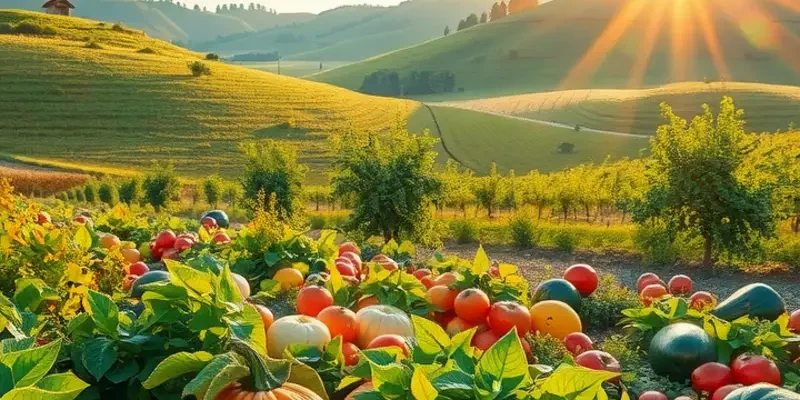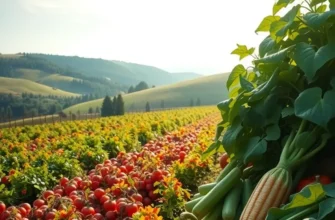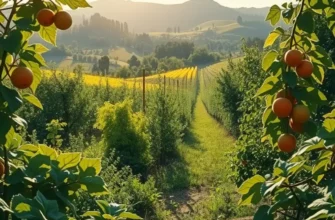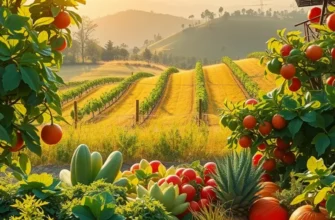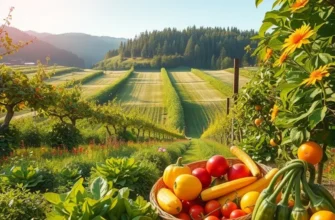Proper storage of cut vegetables is essential in minimizing waste and ensuring food safety. With simple practices, you can keep your fresh produce crisp and nutritious while also managing your kitchen effectively. This guide provides actionable tips for storing cut vegetables at home, whether you’re prepping meals for the week or have leftover chopped veggies from your last dish.
Essential Techniques for Storing Cut Vegetables

Maximizing freshness and reducing waste begins with choosing the right storage techniques for cut vegetables. Effective storage prolongs shelf life and retains nutrient quality. Start by understanding the basics of container selection. Look for containers with airtight seals. Airtight containers limit oxygen exposure, slowing down the degradation process.
Another aspect is material choice. Glass containers are ideal as they don’t leach chemicals and allow visibility of the contents, reducing the risk of the vegetables being forgotten. For some vegetables, breathable bags may be preferable. They allow moisture to escape, preventing rot.
Maintaining appropriate moisture levels is crucial. Vegetables like carrots and celery benefit from slight moisture. Wrap these in a damp cloth or submerge them in a shallow dish of water. Conversely, mushrooms need a dry environment. Store them in paper bags to absorb excess moisture.
Refrigeration is a key factor in vegetable preservation. Keep your refrigerator at a steady temperature. A range of 32°-40°F is optimal for most vegetables, barring tropical types like avocados or tomatoes, which prefer room temperature.
Ethylene gas emissions from some fruits can speed up vegetable spoilage. Keep ethylene-sensitive vegetables away from ethylene producers like bananas and apples. A separate produce drawer in the refrigerator can help manage this.
Safety is an important consideration in food storage. Mark containers with the date of storage to keep track of freshness. Adhere to food safety guidelines by consuming stored vegetables within 2-7 days, depending on type.
Understanding how each vegetable reacts to storage conditions lets you tailor your approach. Lettuce, for example, loves high humidity but dislikes airtight environments, needing a loosely closed container with a paper towel to absorb extra moisture.
For integrated storage solutions, consider sustainable practices. Aligning your storage methods with eco-conscious living can reduce energy costs and extend the life of your produce. For more information, check out this eco-smart kitchen storage guide.
Experimenting with these techniques can add days, or even a week, to the freshness of your cut vegetables, ensuring that their nutritional benefits are preserved while minimizing food waste.
Creative Hacks to Minimize Vegetable Waste

Minimizing waste from cut vegetables can save money and help the environment. Let’s explore some creative hacks that ensure we use every part of our veggies efficiently.
Repurposing vegetable scraps is a fantastic way to reduce waste. The odds and ends of our favorite veggies can be transformed into flavorful stocks. Simply collect your onion skins, celery leaves, carrot tops, and other scraps in a container in the fridge. Once you have a sufficient amount, simmer them with water for several hours. Strain, and you’ll have a homemade vegetable stock that can enhance your soups, stews, and sauces.
Freezing is another excellent technique for extending the life of your produce. Chop or slice vegetables such as bell peppers, mushrooms, and onions, then spread them on a tray to freeze individually. Once frozen, store them in airtight containers or freezer bags. This method allows you to grab a handful for any recipe without thawing an entire batch. Leafy greens like spinach can be blanched briefly and then frozen—perfect for smoothies or quick sautéing.
Leftovers don’t always need to face the compost bin. Incorporating them into new dishes not only reduces waste but also sparks creativity in the kitchen. Transform your leftover vegetables into a hearty frittata or a colorful stir-fry. Simply whisk together some eggs, pour over your veggies, and bake. Alternatively, toss them in a hot skillet with some soy sauce and spices for a quick stir-fry.
For those interested in exploring different culinary applications, consider making vegetable chips from items like potato skins or beet peels. Lightly coat them in olive oil, sprinkle with spices, and bake until crispy. This idea doubles as a healthy snack and an engaging cooking project.
Preserving herbs like cilantro or parsley is another effective way to avoid waste. Blend them with olive oil to create a vibrant green herb oil, or finely chop and freeze them in an ice cube tray with a splash of water or broth. These cubes are perfect for adding fresh flavor to soups and stews.
To further minimize waste in your kitchen, think about how you store your sauces and dressings. Ensuring they are stored safely can prevent spoilage and reduce the need for premature disposal. Our article on safer storage of sauces offers some practical insights.
By adopting these strategies, you can enjoy your produce longer while minimizing your environmental footprint. Each small step transforms everyday kitchen waste into opportunities for delicious and eco-friendly meal enhancements.
Final words
Storing cut vegetables wisely is a key aspect of efficient food management at home. By employing techniques such as proper container usage, moisture management, and creative repurposing of scraps, you can prolong the freshness of your produce while reducing waste. Embracing these practices not only promotes healthy eating but also contributes to a more sustainable lifestyle. Next time you prepare your meals, consider these tips to improve your food storage methods and enjoy the benefits of fresh vegetables for longer.

